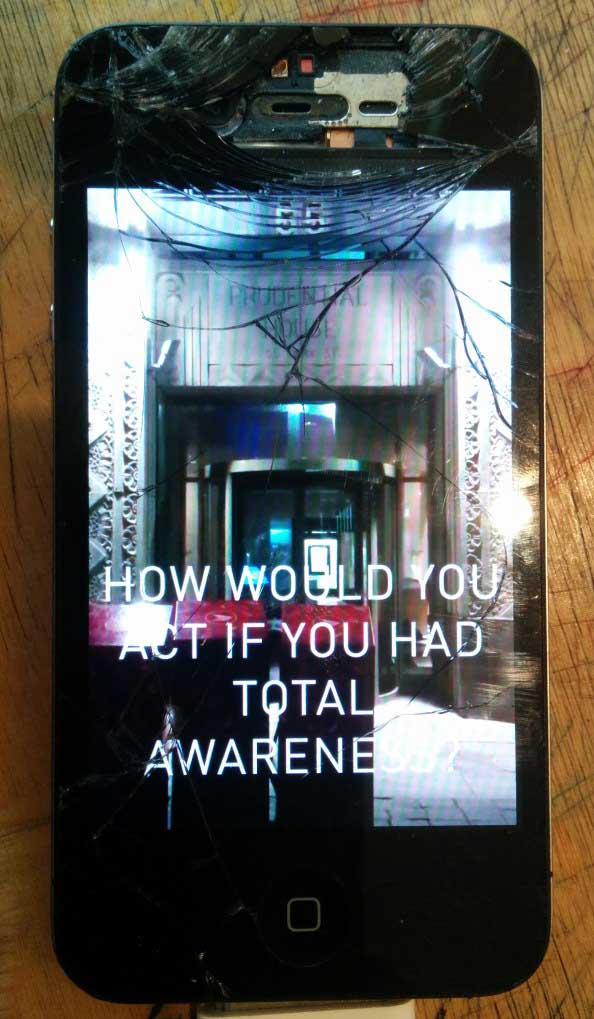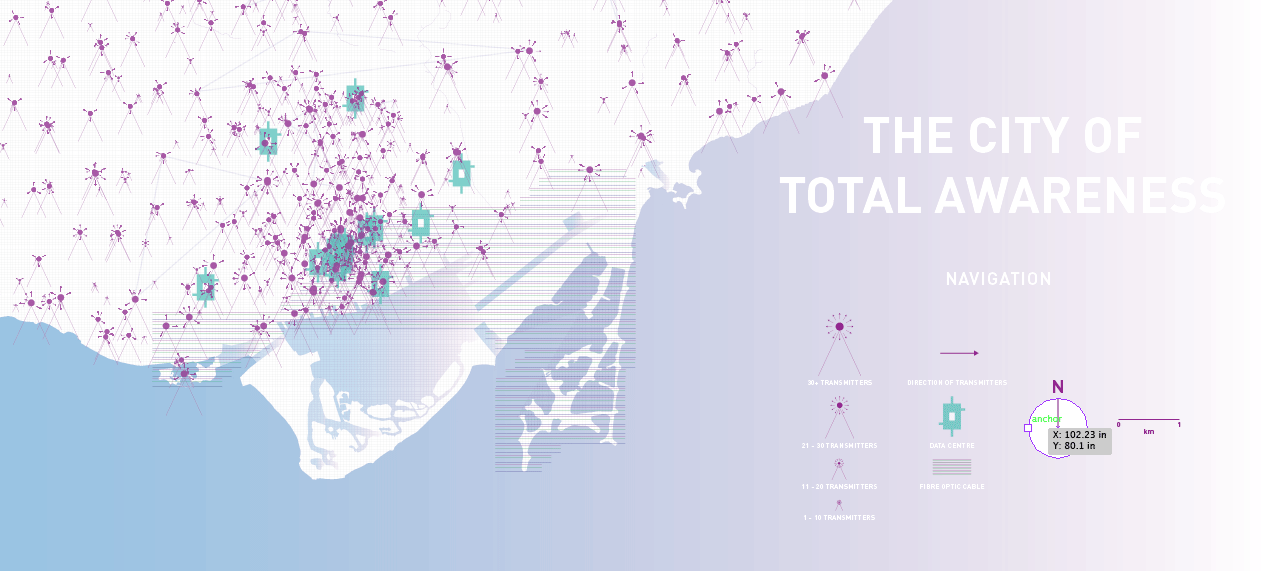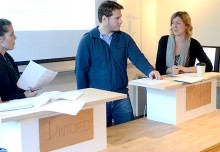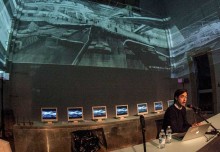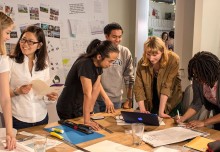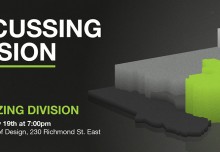Surveillance and Privacy
A response to the series of Design Issues guest lectures at the IwB
An article by Kevin Wang, IwB student 2014-15 with a background in Industrial Design from OCAD University.As you read this sentence, you are being collected. The collection of personal data by the government and corporations is something that people have been speculating for a while. However, it is only recently through globally debated cases like that of Edward Snowden that we now know the extent of private data mining and the violation of our privacy.
To explore these issues in depth, and to give further insights into the matter, the Institute without Boundaries has invited Christopher Pandolfi, an artist, cartographer, urban designer and visual journalist, and his partner Simon Rabinyuk, a visual artist working in sculpture, video, and performance, from the Department of Unusual Certainties (DoUC) to present their recent project “The City of Total Awareness” and share their findings on surveillance and privacy issues.
“The Snowden revelations in June 2013 mark the symbolic closure of the new media era. The NSA scandal has taken away the last remains of cyber-naivety and lifted the internet issue to the level of world politics.” -Geert Lovink (Lovink)
To tackle the complex issues of surveillance and privacy, in their work, Pandolfi and Rabinyuk frame the issues in relations to technology, access, and equity. They explained how the movement of current technology became possible through a shift from militaristic treatment of technology, which was previously technical and sterile, towards a consumer directed form of technology. It was companies like Apple, who were able to shift the movement towards consumers, taking into account people’s emotions and experience. For, Pandolfi and Rabinyuk this has led to a shift towards the commercialisation of personal computing which saw a broadening access to technology allowing the current system of surveillance possible.
“No one can say that you are not being collected anymore.”
– Christopher Pandolfi (Pandolfi and Rabinyuk)
Pandolfi and Rabinyuk explained the way we as a public can become aware of how the National Security Agency (NSA) is collecting personal data and how they can gather data by approaching companies like Microsoft and Facebook directly. The collection of personal data is also through back channels, gathered from emails, phone messages, phone conversations and online chats–everything you do is being recorded, including your keystrokes and the data you have not even sent out.
“The NSA, with the active support of Google, Facebook, Microsoft, and allied secret services, has achieved “total awareness.”
– Geert Lovink (Greenwald)
Their research has led them to the “The City of Total Awareness,” which reveals the physical makeup that makes all this possible and shows the new social relationships and behaviours that may emerge through the city that’s totally aware. They raise the question, what if everyone had access to data like the NSA does? If you had total awareness, control and access to resources, would you use it for good? Pandolfi and Rabinyuk stress that it’s not what the future will look like that matters, but how people will behave with new technology.
“Open data means nothing if people don’t know what to do with it.”
– Christopher Pandolfi (Pandolfi and Rabinyuk)
It is interesting from a social perspective to see how people accept certain violation of privacy for the value of service. For example, we are using Google Drive for ease of access and sharing of data. During the lecture we came to realise how technology leaks our data without our knowledge. When does it actually take place? Does our device leak our information or does it happen at a higher level of the system like in the cloud? Also, technology is a tool that is supposed to help us but is it doing more harm than good? These are some thought provoking considerations to discuss while working on the 2014-15 Connecting Divided Places project, and Christopher and Simon have given us great insight towards how technology can divide or bring people together.
———–
References
Greenwald, Glenn, and Ewen MacAskill. “NSA Prism Program Taps in to User Data of Apple, Google and Others.” Series: Glenn Greenwald on Security and Liberty. The Guardian, 6 June 2013. Web. 16 Oct. 2014.
Lovink, Geert. “Hermes on the Hudson: Notes on Media Theory after Snowden.” E-flux. N.p., 7 Apr.2014. Web. 16 Oct. 2014.
Pandolfi, Christopher, and Simon Rabinyuk. “Equality in the Digital World.” 230 Richmond St. East, Toronto. 16 Oct. 2014. Lecture.
Fig. 2. How Would You Act If You Had Total Awareness? 2014. The Textile Museum of Canada, Toronto. Department of Unusual Certainties. Web. 16 Oct. 2014.
Fig. 1. The City of Total Awareness. 2014. The Textile Museum of Canada, Toronto. Department of Unusual Certainties. Web. 16 Oct. 2014.
